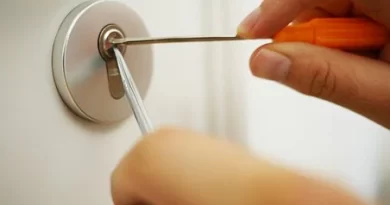How to Fix a Squeaky Faucet Handle
When age catches up with a faucet, or its threads loosen, the handle starts producing a squeaking noise every time you turn the tap on or off.
The noise is not pleasing to the ears and can get you easily irritated. It is essential to fix a squeaky faucet handle. If you’ve got no clue, fret not. In this article, you’ll have insight into a step by step guide on repairing a noise-making tap handle.
If you know the cause of something, it becomes easier to prevent it. Regarding this, let’s first look at the leading causes of a squeaking faucet handle.
Causes of a Squeaky Faucet Handle
Older Faucet Versions
If your faucet’s handle is squeaking, it’s probably an older compression faucet. Such taps come with two handles that rotate beyond 90 degrees. Mostly, their handles come made with wood or porcelain rods. Their washers are usually worn out, explaining why the hot and cold knobs are generally not well aligned. Others have either oval or circular handles without any alignment.
Friction between the Valve Housing and Metal Stems
When the faucet’s metal stem rubs on the valve housing, the handle will make some noise when switching the water on and off.
Loose Valve Stem
A loose valve stem will vibrate when operated.
Loose Washer
The valve stem contains a washer on its end. When this washer becomes loose, it starts to vibrate when the faucet is in use.
Partially Blocked Inlet Hole
If the faucet’s valve seat inlet hole gets blocked partially, the water passing through it will make a squeaky noise due to pressure.
Luckily, you don’t have to install a new faucet to solve the problem. The solution is to either replace or tighten the washer, use vinegar to wash the valve seat, or lubricate all the faucet’s metal parts. Use the following guide to fix a noise-making tap handle.
6 Steps to Repair a Squeaky Faucet Handle:
Most homeowners regard repairing a squeaking tap handle as challenging, but it’s not. The simplicity of the repair process and the short time it takes makes it ideal for anyone to do.
It is an excellent DIY home project for those who love using their hands. If time is not on your side, you may engage an expert like a sink engineering author to assist you.
Step 1: Gather the Required Items
You will require some equipment to repair the noisy handle. You will need to assemble the necessary materials to use first. The essential items to have are;
- A wrench or pliers
- A drill
- A screwdriver
- A lubricant (Plumber’s grease)
- Screws
- Screw extractor
Though some items like a screw extractor, drill, or screws are not a must, they will make the repair process easier and faster.
Step 2: Remove the Faucet’s Cap
After ensuring you have all the necessary items for the repair process, pry off the faucet’s lid or cap. The easiest way is by using a screwdriver.
Press the end of the screwdriver below the faucet’s top. You only need to apply the required pressure, and it will come off.
Sometimes the faucet’s cap comes tight in its center. As a result, you may not succeed in removing it using a screwdriver.
If it’s the case with yours, use a pair of pliers to grip the lid. Then rotate the cap clockwise to loosen it.
When the cap is off, you can now reach the faucet’s handle.
Step 3: Take Out the Screw
You need to remove the screw so that you can take out the knob. Start by unscrewing it using a screwdriver. Rotate the screw clockwise until it comes off.
If you have a drill, it’s better to use it as it exerts more force than your hands. As explained earlier, such a tool is unnecessary, but it will make work easier and faster when used.
You will ease your work using an extractor or drill, especially if a stripped screw is involved. First, you will require attaching the extractor to your drill.
Then remove it quickly by putting the attached drill on the screw’s head. After removing the knob, the handle stem gets exposed.
At times the screw becomes a challenge to remove. It may get stuck to the handle stem. Not even a screwdriver can turn it. If this is the case, use a battery drill.
First, take the lubricant you want to use and spray it on the screw. Then allow the grease to sit for approximately 10 minutes.
After the time is up, put the drill on the screw and push as hard as you can. Then turn on the drill and allow it to operate at low speed while turning the screw anticlockwise.
The torque developed while turning a screwdriver is way less than that from a drill. It is the reason a drill is best to use on a stuck screw.
Step 4: Lubricating the Handle Stem
You will get rid of the squeaking noises by lubricating the handle stem. Though any simple lubricant is ideal, a plumber’s grease is most preferred.
Remove the handle stem and oil all its parts. Any part left ungreased will continue making the noise. Apply the grease generously. Otherwise, the noise will keep coming.
In case the handle stem is also stuck and even hitting it with a hammer doesn’t work, try pulling it out with pliers. If it doesn’t work, use a hairdryer to heat it.
In case this also doesn’t work, you’ll have no option but to use a handle puller. It resembles a corkscrew and contains tines responsible for hooking underneath the faucet’s handle when a pin is anchored against the valve stem’s top.
Turning the handle makes the tines lift the handle stem. You can get a handle puller from a hardware store near you. You can also order one online.
Step 5: Return the Knob
After all the handle stem parts have been appropriately greased, take the knob and return it where you removed it.
Ensure you do it right to avoid complications. When sure the knob is resting at its correct place, pick the screw you had removed from its center and screw it back. A drill or screwdriver will help tighten the screw properly.
But you shouldn’t return a stripped screw, especially when you removed it with a screw extractor. Replace it with a new one.
When using a screwdriver, rotate it anticlockwise until the screw tightens to the desired point.
Step 6: Put Back the Cap
When assured that the knob’s screw is correctly placed and appropriately tightened, replace the cap. Just place it on the knob at its place, at the center, and apply some pressure. It will slip to its position.
Then turn it clockwise until tight enough to ensure it’s secure.
As indicated earlier in this article, the squeaky noise could result from an aged or rusty faucet. If this is the case with your faucet, use the above method to remove the faucet apart.
Then use vinegar to clean the handle stem before greasing it as described above. Vinegar removes the rust.
If you are not ready to carry out the above guide on fixing a noisy tap, you can replace the entire kitchen faucet with a new one. The cost of replacing a new faucet to having it fixed is high.
But if you have the budget and don’t have the time to fix it, installing another faucet will be the only option.
But if you have the time, repairing a noisy faucet is a simple procedure and doesn’t require much of your time. It is one of the best home DIY projects, making it an excellent thing to do for the homeowners who love doing things with their hands.
Never engage a quack to replace or repair your faucet. The results may end up making you dig deeper into your pockets.
If you can’t do it or don’t have the time, always seek a professional’s services. If you happen to remove the faucet using a wrench, don’t reassemble it. Install a new one.
Conclusion
Faucets are essential in any kitchen or wash area. These fixtures improve any room’s interior décor and allow the right water pressure and temperature for our cleaning.
But when they start making noises when turned on or off, they may get into your nerves.
But the above repair guide brings light at the end of the tunnel. The squeaky noises from your faucet’s handle can get stopped. You only need to follow the step by step procedure described above.
If you don’t have to do it yourself, engage a professional. Unqualified plumbers will not only do a shoddy job but also cost you more in the long run.




